Theme 4: National Policies, Programs, and Plans
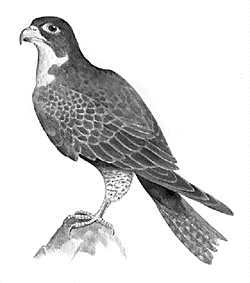 |
|
peregrine falcon
|
...estimates indicate that Canada is home to over 140,000 species.
Overview
Government agencies, non-government organizations, and individuals all play significant
roles in conserving biodiversity and protecting species at risk.
This theme summarizes national policies, programs, and plans such as habitat protection, monitoring, and recovery of species at risk, and provides an overview of the relevant Canadian
federal legislation.
Most Canadians are aware that there are endangered species here. Surveys show that over 80 percent of Canadians are concerned about species at risk. Not so long ago, the protection of species at risk was believed to be a government responsibility. However, the recent restructuring of
government roles, responsibilities, and funding now requires that every individual play a role in conserving biodiversity and protecting species at risk.
Because the distribution of species at risk in the country is so vast, it is impossible to protect them and their habitats simply by establishing parks and protected areas. Pro-active and
preventative actions are required, including recovery plans that involve citizens, ranchers and farmers, rural landowners, and industry.
What's happening to...
Home to 193 mammal species, 550 bird species, 83 species of amphibians and reptiles, and
177 freshwater fish species --and invertebrate and plant species believed to number
about 34,000 and 4,200, respectively--Canada seems to be bursting with wildlife. The number of micro-organisms is most likely staggering! In total, estimates indicate that Canada is home to over 140,000 species. We have most of the Earth's mountain sheep, woodland caribou, grizzly bears, wolves, and wolverines. All these vital life forms in a country that contains 10 percent of the world's forest cover and 25 percent of its wetlands. The appropriately named Great Lakes hold 20 percent of the world's fresh water supply!
Unfortunately, at least nine animal species native to Canada have become extinct since European
settlement.
In addition, one woodland caribou population has become extinct--the Queen
Charlotte Islands population--and 13 other species have disappeared from Canada but still exist in other countries.
As of November 2002, COSEWIC's list of species, subspecies and populations of wild plants,
mammals, birds, reptiles, amphibians, fish, molluscs, butterflies, mosses and lichens
totalled 415.
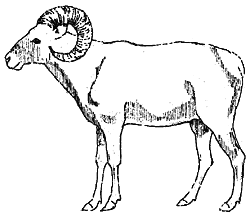 |
|
mountain sheep
|
What happened? An overview:
Between 1986 and 1996, over 300,000 hectares of rural
landscapes in this country were converted to urban use.
The number of hectares lost since has no doubt increased.
Dioxin levels in British Columbia were three times higher in 1989 than in 1986,
affecting the province's great blue heron colonies.
Thousands of waterfowl are still poisoned by lead from shot and sinkers,
despite hunting and fishing regulations that ban them.
Its effects on the food chain has put numerous species
officially at risk in eastern North America.
Oil and chemical spills seriously harm people, wildlife, and the environment.
They might be spills from ships, oil seeping from leaky fuel tanks,
or "mystery spills" from chemicals flushed out through storm sewers.
In Atlantic Canada, for example, thousands of spills occur every year.
In 1993 alone, alert citizens reported nearly 2,250 oil and chemical spills to local
authorities. These types of oil spills include fuel and bilge oil from ships,
crude oil from grounded or sinking tankers, leaking underground gasoline storage tanks,
chemical and waste leaks from industrial sites, pesticide and fertilizer spills,
home heating oil from leaky residential tanks, and waste automobile oil that
is deliberately dumped.
Introduced and invasive species, such as purple loosestrife
and zebra mussels, have robbed birds and mammals of food
and habitat. This problem in Canada is greatest in the
southern portions of Ontario and British Columbia.
What's happening for...
In 1987, the American white pelican was removed from the COSEWIC list.
For nine years the pelican had been listed as threatened, but with recovery efforts
the American white pelican was able to successfully start new colonies in prairie lake habitats,
and eventually its numbers increased. Today, the American white pelican is once again found in
relatively healthy numbers across the Canadian prairies--as a summer resident
in the western provinces, with breeding populations from southern interior British Columbia, through northern Alberta, northwestern Saskatchewan, central Manitoba and western Ontario.
As well, the wood bison, a hefty ungulate species that was particularly at risk despite its historically high numbers, was downlisted in 1988 from endangered to threatened, a designation it still carries today. Another downlisted species is the peregrine falcon, the tundrius subspecies, from threatened to vulnerable
in 1992. And, in 1995, the ferruginous hawk was downlisted from threatened
to vulnerable.
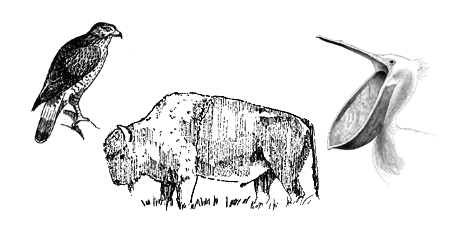 |
|
Ferruginous hawk, wood bison, American white pelican.
|
Policies, programs, and plans ... oh my!
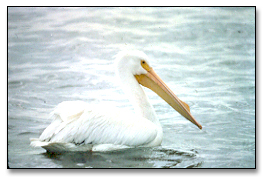 |
|
American white pelican.
Photo: FON |
None of these successes would be
possible without some or all of the
following policies, programs, and plans that, together, contribute to and help realize the goals of protecting species-
at-risk and the overall goal of conserving ecological biodiversity.
In 1990, wildlife ministers from all jurisdictions agreed to what they called a "Wildlife Policy for Canada." This document called for, among other things, nationwide agreement to maintain and enhance the health and diversity of Canada's wildlife, ecological processes, and biodiversity, while ensuring that all uses of wildlife are sustainable. In addition to full agreement among all government jurisdictions, aboriginal groups and non-government organizations also embraced the policy as a framework and strategy for wildlife conservation.
Established in 1990 by the federal Minister of Environment, the NAWCC
is an advisory body made up of
12 members from federal and provincial levels of government and non-government organizations. The federal Minister of the Environment appoints each member. Approximately 30 percent of the species listed by COSEWIC depend on wetland ecosystems, so the role of the NAWCC is very important not only to the future of the wetlands, but also the species that depend on them.
The council advises the federal minister on wetland conservation initiatives of national or international importance. Its mandate includes providing a national forum to oversee co-ordinating and implementing Canadian Joint Ventures of the North American Waterfowl Management Plan (see below), facilitating and monitoring wetland conservation policies and awareness programs in Canada, and facilitating Canada's involvement in international wetland conservation initiatives.
The council provides, among other things, advice to government agencies, training and workshops, publications and publication services, and financial support for wetland species and wildlife habitat conservation.
The North American Waterfowl Management Plan (NAWMP) is an agreement signed in 1986 between Canada and the United States, with Mexico joining in 1994. Projects are overseen by the NAWCC (above), with Canada currently undertaking three Habitat Joint Ventures (pacific coast, prairie habitat, and eastern habitat) and two Species Joint Ventures (Arctic goose and black duck).
To integrate and complement legislation across the country, the federal, provincial, and
territorial governments together agreed in 1997 to develop and implement a "National Accord for the Protection of Species at Risk." This means that all jurisdictions agreed to review existing species at risk legislation and programs, and develop complementary ones to ensure that endangered species across the country are protected.
Under the Accord, federal, provincial, and territorial wildlife ministers agree to:
-
Co-ordinate activities through a new Canadian Endangered Species Conservation Council to avoid duplication and resolve conflicts, provide overall direction, and help set priorities for
protecting species across Canada;
-
rely on COSEWIC as an independent scientific advisory body; and,
-
establish complementary programs and legislation to:
-
legally designate threatened or endangered species;
-
protect species at risk and their habitats;
-
work towards their recovery;
-
co-operate on species at risk that cross borders;
-
encourage preventive measures such as stewardship, voluntary action, and public information.
Essentially, it is under this Accord that the federal government committed itself to
developing appropriate legislation for species at risk.
Canada's Species at Risk Act (SARA) was passed on December 12, 2002 and a number of sections of the Act came into force on June 5, 2003.
The Act aims to protect species at risk from becoming extinct or lost from the wild,
with the ultimate objective of helping their numbers recover.
SARA protects birds, plants, fish, mammals, invertebrates, amphibians and reptiles
listed as endangered or threatened nationally and protects their residences
(dwelling places such as nests and dens). The Act also provides some protection for
extirpated species. As well, it will complement work done by provincial and territorial
governments under the Accord. The Act also protects the critical habitat of listed
aquatic species, many migratory bird species, and any listed species on federal land.
A few aspects of the Species at Risk Act include: prohibiting killing or harming of listed species at risk; some provisions for protecting critical habitat; undertaking recovery strategies and action plans; promoting stewardship; and compensating landowners.
For current information on this important piece of species at risk legislation,
refer to the Environment Canada Web site (www.on.ec.gc.ca).
Recovery
It is always preferable to prevent species from becoming at risk in the first place. Unfortunately, this is not always possible. There are numerous recovery and reintroduction programs at federal and provincial/territorial and even municipal levels to assist individuals in protecting species at risk and their habitats.
For example, under RENEW (Recovery of Nationally Endangered Wildlife), in 2001-2002
over 100 government agencies and non-government organizations
contributed $26 million dollars toward recovery program teams for
35 terrestrial vertebrates, such as the whooping crane, peregrine falcon,
swift fox, and piping plover.
Recovery teams have been responsible for the recovery of
Baird's sparrow (delisted), ferruginous hawk (downlisted) and
woodland caribou (Gaspé population).
The Baird's sparrow was actually delisted because research indicated that
there were many more birds around than once thought.
This underscores the importance of inventory and research efforts.
See the RENEW Web site (www.speciesatrisk.gc.ca)
for further information and to access up-to-date reports.
 |
|
peregrine falcon
|
Habitat protection
The federal government has long set aside wildlife areas and sanctuaries specifically to protect habitats essential for some endangered and migratory species. Generally, the federal government administers these areas, while
others are shared responsibilities between jurisdictions.
Detailed information on these areas can be found at the
Environment Canada Web site (www.on.ec.gc.ca).
NWAs are protected sites that are nationally and internationally important for conserving wetland species. Identified by a blue and white sign of a loon, NWAs are found in almost all jurisdictions in the country, except Prince Edward Island and Newfoundland. NWAs provide opportunities for public education, canoeing, watching wildlife, and some traditional uses such as fishing, trapping, and hunting. There are 48 NWAs across Canada protecting almost 490,000 hectares of critical habitat.
Some examples: the Pointe de l'Est NWA on Îles-de-la-Madeleine in Quebec protects critical nesting sites for the piping plover. It is the only place in that province where these shorebirds nest. Many desert species found nowhere else in Canada, such as the bighorn sheep and spadefoot toad, are protected in the Vaseux-Bighorn NWA in B.C.'s Okanagan Valley. Bathurst Island, NWT; is home to the Polar Bear Pass NWA that protects the habitat of the Peary caribou and the polar bear.
In Ontario, the Mohawk Island NWA and Long Point NWA together protect more than 100 species at risk. The Lake St. Clair NWA protects marsh habitats, and Scotch Bonnet Island NWA, in Lake Ontario, is the site of long term studies on the effects of environmental contaminants on water birds.
MBSs provide a network of nationally significant habitats for migratory birds. Except by permit, no activity disturbing or harmful to migratory birds or their eggs is allowed. Some habitat improvement and government research is allowed.
Today, MBSs in Canada number almost 100, and cover almost 11.5 million hectares. The Queen Maud Gulf Migratory Bird Sanctuary in the Northwest Territories, established in 1961, covers almost 62,800 square kilometres, the largest federally protected area in Canada. This MBS stretches 300 kilometres along the south coast of the Gulf and extends 135 kilometres inland, protecting critical nesting grounds of some of the world's populations of geese, including Ross' goose, lesser snow, Atlantic and black brant, greater white-fronted and Canada geese. This MBS is also an important site for seals and large mammals.
MBSs in Ontario include the Eleanor Island MBS in Lake Muskoka and Chantry Island MBS in Lake Huron, protecting heron, gull, and other waterbird nesting habitats.
Taken together, MBSs and NWAs cover almost 12 million hectares of federal lands, an area greater than twice that
of Nova Scotia.
Originally developed in Ramsar, Iran (from which the convention takes its name) in 1971 by representatives from 18 countries, Canada joined the RAMSAR Convention in 1981. Since then, over 35 sites have been designated as Wetlands of International Importance, covering over 13 million hectares of this country.
Critical habitats for thousands of species and many species at risk, wetlands are also habitats that can be designated at risk. The RAMSAR Convention on Wetlands provides the means for global recognition of wetlands and other habitats significant to wetland ecology. RAMSAR sites can include National Wildlife Areas, Migratory Bird Sanctuaries, and national, provincial, and territorial parks, as well as sites not already protected.
RAMSAR sites in Ontario include, for example, Long Point (also a biosphere reserve and NWA), a major feeding and resting area for migratory waterbirds, a stop-over site for land birds and bats, and home to 26 species of reptiles and amphibians. Another RAMSAR site is Minesing Swamp, southern Ontario's largest and most diverse wetland.
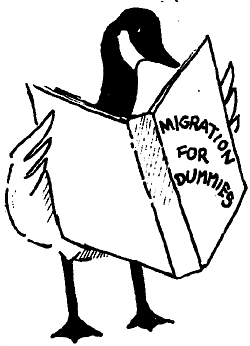 |
|
Canada goose
|
Who's doing what ...
Government structure and legislation policies, programs, and plans are all fine and good,
but who is ultimately responsible for protecting wildlife and wild areas in Canada?
The federal, provincial, and territorial governments each have the legal right to oversee the management of the various natural resources within their political boundaries. The federal government is responsible for inter-provincial, territorial, and international wildlife concerns while the provinces and territories, for the most part, are responsible for the wildlife within their provincial boundaries. Following is a summary of the responsibilities of the three primary
levels of government in Canada.
Every town and city in Canada has a local or municipal government, responsible for the
concerns of the town and the citizens living within it (e.g., local roads, sidewalks,
local parks, garbage, recycling, transit, environment and planning.)
Each of Canada's 10 provinces and three territories has its own government. The provincial and territorial governments are responsible for issues that concern the people and natural resources within their boundaries (e.g., provincial parks, wild-life, roads, highways, health, welfare,
education, licenses -- marriage, birth, death, hunting, driver's).
This is the broadest level of government. The federal government is responsible for issues that concern Canadian citizens nationally and internationally (e.g., national defence, fisheries and oceans, immigration, national parks, Canada Post). And, with regard to wildlife
management, the federal government oversees all wildlife in national
parks and National Wildlife Areas,
migratory birds, most fish species,
and some wildlife in the territories.
The government administers a variety of laws, through different departments, that affect wildlife and wild areas in Canada, including:
-
the Yukon, Northwest, and Nunavut territories;
-
national borders between the territories and provinces;
-
international borders between the U.S. (including Alaska) and Canada;
-
a 200 mile (322 kilometre) limit of Canadian waters extending into the oceans and bays (including Hudson's and James bays) all around the Canadian islands. Beyond this limit, international laws and treaties govern the waters.
See Handout 11 for a listing and description of key Federal Government Departments.
|
The map of Canada (Handout 10) can be copied and provided to students.
Use it to identify jurisdictions, the Canada/U.S. border,
200 mile/322 kilometre limit, even check out where their municipality is located.
In addition, Handouts 11 and 12 provide lists of federal departments and legislation for
reference.
|
Legislation
If it were not for legislation, our lives would be in chaos. Defined as "the act
or procedures of making and enacting (performing or carrying out) laws" and "an officially enacted law or laws,"
legislation is part of everyday life regardless of the country one lives in. Legislation governs global activities, international and national activities, and local activities in towns, cities, and neighbourhoods.
See Handout 12 for a list and description of key Federal legislation related to
wildlife and species at risk in Canda.
The roles of people
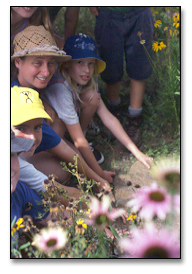 |
|
FON Young Naturalists Camp.
Photo: FON |
People are what make or break all the policies, programs, plans, and legislation that can
be thought up. Individuals--many through government branches and non-government
organizations (NGOs) --contribute toward protecting and recovering
Canada's species at risk. Individuals in all walks of life can play an important role.
For example, when a landowner is involved in protecting a species at risk--in other words,
conserving biodiversity--these efforts often fall under stewardship or land stewardship programs.
Stewardship means taking care of something with proper regard to other living creatures.
With regard to wildlife and habitat, it means managing it for the benefit of the present,
but also in the best interests of the future.
Sustainable use and stewardship can be related.
As individuals adopt environmentally sound conservation practices, and governments
provide tax incentives for the donation of lands and conservation easements for
landowners, further loss of biological diversity can be slowed, if not reversed.
Pro-active approaches such as these are much more successful and often less costly
than mitigation. Where habitat has already been disrupted or destroyed, stewardship
may be able to remedy or mitigate the damage by restoring degraded ecosystems
and/or undertaking recovery programs.
By joining up with a community group or club, individuals can team up with "those in the know" for information and support. Non-government organizations are crucial to the success of efforts to conserve biological diversity, and, therefore, wildlife in jeopardy.
There are over 75,000 NGOs in Canada, and over 4,000 are added every year.
At last count, over 3,000 of these worked on environmental issues such as conservation.
See below for a very brief list of some conservation NGOs with national and international
mandates and programs to help wildlife and habitats in jeopardy
Some national NGOs
The Federation of Ontario Naturalists (FON) is a provincial organization whose connections
and work extend nationally. FON protects nature in Ontario through research, education,
and conservation action. FON champions woodlands, wetlands, and wildlife and preserves
essential habitat through its own system of nature reserves. FON is a charitable
organization representing 25,000 supporters and over 120 member groups across Ontario.
The CNF works closely with 150
affiliated naturalist clubs to complete the natural parks system, establish marine protected areas, and protect endangered species.
CPAWS works co-operatively with government, First Nations, business, and other organizations and individuals to protect Canada's wild ecosystems in parks and wilderness areas.
The CWF, representing members and supporters from provincial/territorial hunting and fishing organizations,
promotes the sustainable use of natural resources, and co-operates with organizations and government agencies with similar objectives.
DU works to protect, restore, enhance, and manage important wetlands and associated habitats for the benefit of North America's waterfowl.
The NCC is dedicated to creating nature preserves and conserving critical habitats by direct purchase, donations, or conservation agreements.
WHC assists in acquiring land and habitats, promotes research on managing habitat, and runs pilot projects focusing on conservation for the benefit of rural economies.
Dedicated to the worldwide conservation of nature and ecological processes,
WWF Canada meets these goals through five programs: Arctic, Marine, National, North American, and Cuba.
What you can do!
Join
a local naturalist club the FON or another environmental group to learn about and support efforts to protect species at risk. There are many organizations that can provide an abundance of information. Find out who they are, their goals and objectives, and who they are affiliated with. Can they provide a guest speaker on a particular topic, or information for the school library? Contact them and ask for help, materials, and speakers.
Write
to local politicians to let them know that you support protection and recovery of species at risk, and the protection of natural habitats. Students can write their local Member of Parliament and community newspaper to voice concerns. Send a copy of the letter(s) to the local naturalist club or
environmental organization, "for their information."
It is always appreciated.
Watch your waste-line!
Pollution always starts with the individual. Pollution is more than the high profile oil or
chemical spills, it is also accumulated litter!
What is the impact of littering--pollution--in your area? As a class, survey your school and community for one day. Record every incident of littering. Bring the results of your survey together in class the next day. Determine the amount
of litter seen in total, and analyze the reasons for the littering.
Based on the results, why does littering occur?
What can be done to stop it? List the responsible actions individuals can take,
and then spread the word!
Handout 10: Map of Canada
Handout 11: Some Federal Government Departments
Environment Canada was established in the early 1970s to
regulate and monitor industrial emissions and pollutants entering
the environment, respond to environmental emergencies, and to conserve Canada's national natural resources. Their priorities include clean air, water, climate change, nature, weather, and environmental predictions.
Part of Environment Canada, the CWS is responsible for federal
wildlife matters including protecting and managing migratory
birds, nationally significant wildlife habitat, federally regulated endangered species, and controlling international trade in
endangered species. In addition, the CWS conducts biological research on migratory and other bird species, and some mammals and amphibians.
Protecting natural areas includes creating national parks under the National Parks Act.
The Parks Canada Agency's role is to protect and present nationally significant examples
of Canada's natural and cultural heritage and to foster public understanding, appreciation
and enjoyment in ways that ensure their ecological integrity for future generations.
This agency is responsible for all aspects of forestry on federal
Canada lands, including research, development, and renewal.
This federal department is responsible for policies and programs
related to oceans and freshwater fish and fish habitats in Canada.
The DFO manages and protects fisheries resources, maintains marine safety, and facilitates Maritime trade, commerce, and ocean development.
Handout 12: Federal Legislation related to Wildlife and Species at Risk
Canada's Species at Risk Act (SARA) was passed on December 12, 2002 and a number of sections of the Act came into force on June 5, 2003.
The Act provides for the assessment and listing of species,
some provisions for the protection of critical habitat, and species recovery.
The Act officially recognizes for the first time
the Committee on the Status of Endangered Wildlife in Canada (COSEWIC).
The Act prohibits the killing and harming of all listed endangered and threatened species,
and destruction of their residences.
Recovery strategies are mandated for all species listed as endangered, extirpated,
threatened or of special concern. The Act also protects the critical habitat of listed
aquatic species, many migratory bird species, and any listed species on federal land.
Makes it illegal to destroy fish habitat by, for example, dumping pollutants
into a river. Though the Department of Fisheries and Oceans (DFO)
administers the Act, provincial/territorial conservation officers enforce it.
Administered by Environment Canada through the Canadian Wildlife Service,
this Act helps the federal government co-ordinate efforts by other jurisdictions
to undertake research, conservation, and interpretative programs, and to acquire
key wildlife areas (such as National Wildlife Areas).
Requires that the environmental effects of a project involving the federal
government receive careful consideration and provide opportunities for
and Regulations public participation in the assessment process.
Implements a signed convention between Canada and the
United States to protect certain migratory bird species, their nests, sperm,
eggs, embryos, tissue cultures and parts. These species are strictly a federal
responsibility. Canada geese and all waterfowl are examples of some
species covered under this Act.
Provides for the creation of national parks in Canada.The Act has a strong ecological
protection mandate "...to protect, for all time, representative natural areas
of Canadian significance in a system of national parks, and to encourage public understanding,
appreciation and enjoyment of this natural heritage so as to leave it unimpaired for future
generations."
A revised Act was introduced to Parliament in March, 2000 which, if passed, will limit commercial growth in national parks and ensure that ecological integrity is paramount.
Passed in 1996, this Act protects all species of wild animals and plants that are used
in trade which were illegally obtained or killed. It regulates the international and
inter-provincial trade of those species, making it possible for Canada to comply with
and legally enforce international agreements such as CITES. Fines for contravening
the Act range from $25,000 to $300,000 and/or six months to five years in jail.
|
|
|
|